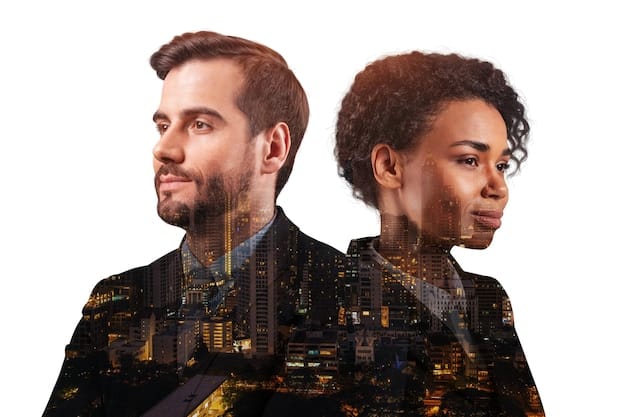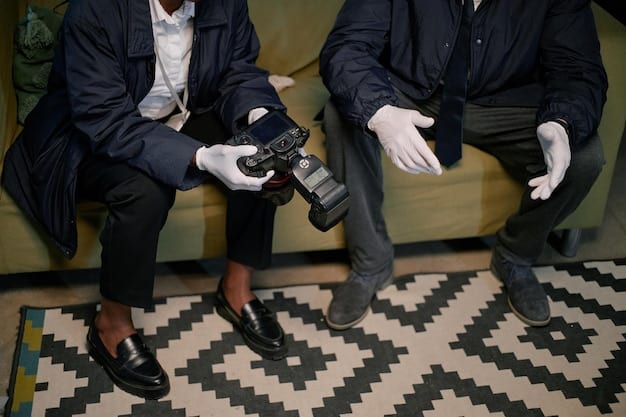Legal Drama Evolution: Courtroom Changes Since 2000

The evolution of legal dramas since 2000 reveals a shift towards heightened realism and procedural accuracy, although certain dramatic conventions persist for entertainment value, influencing public perception of the American legal system.
Legal dramas have always captivated audiences, offering a glimpse into the high-stakes world of law and justice. But how much has this portrayal of courtroom procedures changed since the year 2000? This article delves into the evolution of legal dramas: how courtroom procedures have (and haven’t) changed since 2000, examining the balance between dramatic license and factual accuracy in popular television and film.
Modern Legal Dramas: A Shift Towards Realism?
Since the dawn of television, legal dramas have been a staple of entertainment. However, viewers in the 21st century may notice differences in how courtroom procedures are depicted. Has there been a push for greater realism, or are shows simply adapting to changing audience expectations?
Increased Focus on Procedural Accuracy
Many modern legal dramas strive for greater accuracy in their depiction of courtroom procedures. This includes accurately representing the roles of different legal professionals, the rules of evidence, and the process of jury selection.
Consultation with Legal Experts
To achieve this level of accuracy, many shows now consult with legal experts, including lawyers, judges, and forensic specialists. These experts provide valuable insights into the intricacies of the legal system, ensuring that the show’s courtroom scenes are as realistic as possible.
- The rise of true crime documentaries has heightened audience awareness of legal processes.
- Legal dramas often mirror real-life cases, drawing inspiration from current events and landmark decisions.
- Improved technology allows for more realistic depictions of forensic science and evidence analysis.

Modern legal dramas often focus on the complexities of the legal system, highlighting the challenges faced by lawyers and judges in their pursuit of justice. By incorporating realistic elements and expert insights, these shows offer viewers a more authentic and engaging portrayal of the legal world.
The Enduring Appeal of Dramatic License
While realism has become increasingly important, legal dramas are still works of fiction designed to entertain. To keep audiences engaged, shows often employ dramatic license, exaggerating certain aspects of courtroom procedures or introducing conflicts and twists that may not be entirely realistic.
Speeding Up the Legal Process
One common form of dramatic license is to compress the timeline of a legal case. In reality, legal proceedings can take months or even years to resolve. However, television dramas typically resolve cases within a single episode or season.
Exaggerating the Drama
Legal dramas often heighten the drama by introducing unexpected twists, surprise witnesses, or shocking revelations. While these elements can make for compelling television, they may not accurately reflect the often-tedious nature of real-life legal proceedings.
Despite the increasing demand for realism, dramatic license remains crucial for a compelling narrative. It allows shows to create suspenseful and emotionally charged storylines that keep viewers hooked.
Portrayal of Lawyers: Then and Now
The way lawyers are portrayed in legal dramas has also undergone significant changes. From the heroic defenders of justice to complex, morally ambiguous characters, the evolution reflects changing perceptions of the legal profession.
Classic Archetypes vs. Modern Complexity
Early legal dramas often featured lawyers as idealized figures, fighting tirelessly to uphold justice and defend the innocent. Modern shows, however, present lawyers as more complex individuals, grappling with ethical dilemmas and personal struggles.
Diversity and Representation
Modern legal dramas are also more diverse in their representation of lawyers. Shows now feature characters from a wider range of racial, ethnic, and socioeconomic backgrounds, reflecting the changing demographics of the legal profession and society as a whole.
- Lawyers are now commonly portrayed as having flaws to make them relatable.
- Legal dramas now tackle the difficulties faced by minorities and women in the legal profession
- Many shows feature protagonist that have personal struggles, such as addiction.
By presenting a more realistic and diverse portrayal of lawyers, modern legal dramas challenge traditional stereotypes and offer viewers a more nuanced understanding of the legal profession.
The Impact of Technology on Courtroom Depictions
Technology has revolutionized the way legal cases are investigated, presented, and adjudicated. This has a significant impact on how courtroom procedures are depicted in the media.
The Rise of Digital Evidence
Modern legal dramas often feature digital evidence such as emails, text messages, social media posts, and surveillance footage. Lawyers must now be tech-savvy, able to navigate complex digital landscapes and present digital evidence effectively.
Virtual Reality and Visualizations
Some shows are even experimenting with virtual reality and other advanced technologies to recreate crime scenes or demonstrate complex scientific concepts in court. These simulations can offer jurors a more immersive and intuitive understanding of the evidence.

By adapting to the changing technological landscape, legal dramas can offer viewers a more contemporary and engaging portrayal of the legal system. They also increase the tension and the complexity of the cases.
Ethical Dilemmas and Moral Ambiguity
Modern legal dramas often explore the ethical dilemmas and moral ambiguities inherent in the legal system. This involves tackling complex issues such as conflicts of interest, prosecutorial misconduct, and the role of lawyers in representing guilty clients.
Questionable Actions
These shows often delve into the grey areas of the law, examining the difficult choices faced by lawyers and judges in their pursuit of justice. This can lead to morally ambiguous characters who are willing to bend the rules or compromise their principles in order to achieve a desired outcome.
Exploring Systemic Issues
By exploring the ethical dilemmas and moral ambiguities of the legal system, these shows encourage viewers to critically examine the role of law and justice in society. Some shows now explore systemic and institutional issues and problems.
These shows can spark important conversations about the nature of justice and the responsibilities of legal professionals. This can also lead to lawyers coming to terms with ethical and moral values.
The Court of Public Opinion vs. The Court of Law
Legal dramas frequently explore the tension between the court of public opinion and the court of law. The media’s influence can often affect the jury’s decision, even if the media reports contain some information that cannot be admitted in court.
Media Influence and Public Perception
Legal dramas often emphasize how trials play out in the media and how that affects the case. When the show depicts cases involving the court of public opinion, it often becomes about winning over the jury, rather than the truth.
Consequences
Often shows portray both sides that come with the media’s influence. This shows how both the prosecution and defense can be aided or hurt by the consequences.
Shows often dive into how public opinion can sway a jury one way or another. This often happens to high profile cases that receive lots of attention.
| Key Aspect | Brief Description |
|---|---|
| ⚖️ Realism Boost | Modern dramas focus on procedural accuracy. |
| 🧑⚖️ Lawyer Portrayal | Lawyers depicted more diverse and ethically complex. |
| 📱 Tech Integration | Digital evidence and VR simulations are common. |
| 📰 Media Influence | Public opinion impacts trial outcomes in dramas. |
Frequently Asked Questions
▼
Accuracy varies; modern dramas often consult legal experts. However, dramatic license always exists to enhance entertainment. Some shows care for accuracy more than others.
▼
Dramatic license refers to the liberties taken by writers to make it more exciting. This often means speeding up timelines and adding more conflict.
▼
Lawyers’ portrayal have moved from idealized figures to far more complex characters who grapple with ethical dilemmas and personal struggles. Shows have been able to diversify its charcaters as well.
▼
Technology introduces digital evidence (emails, social media, etc.) and virtual reality, requiring lawyers to be tech-savvy. It can also be used to add an enticing crime scene.
▼
Yes, modern series tackle ethical dilemmas like conflicts of interest, exploring how lawyers make questionable choices in their pursuit of justice. However it all depends on the show.
Conclusion
From increased realism to the exploration of ethical dilemmas, legal dramas have evolved significantly since 2000. While dramatic license remains a crucial element, modern shows are attempting to strike a balance between entertainment and factual accuracy, offering viewers a more nuanced and engaging look into the world of law and justice.





